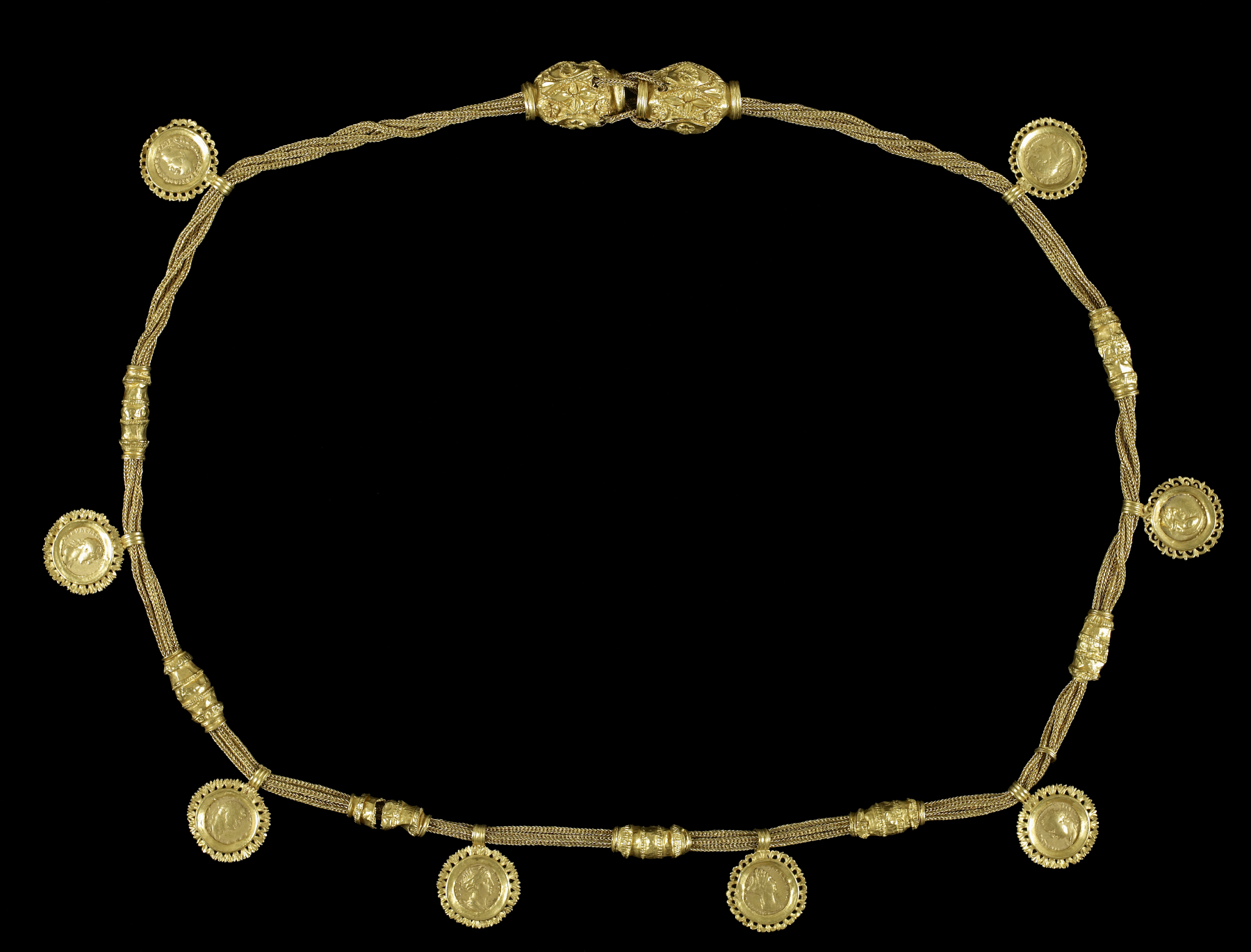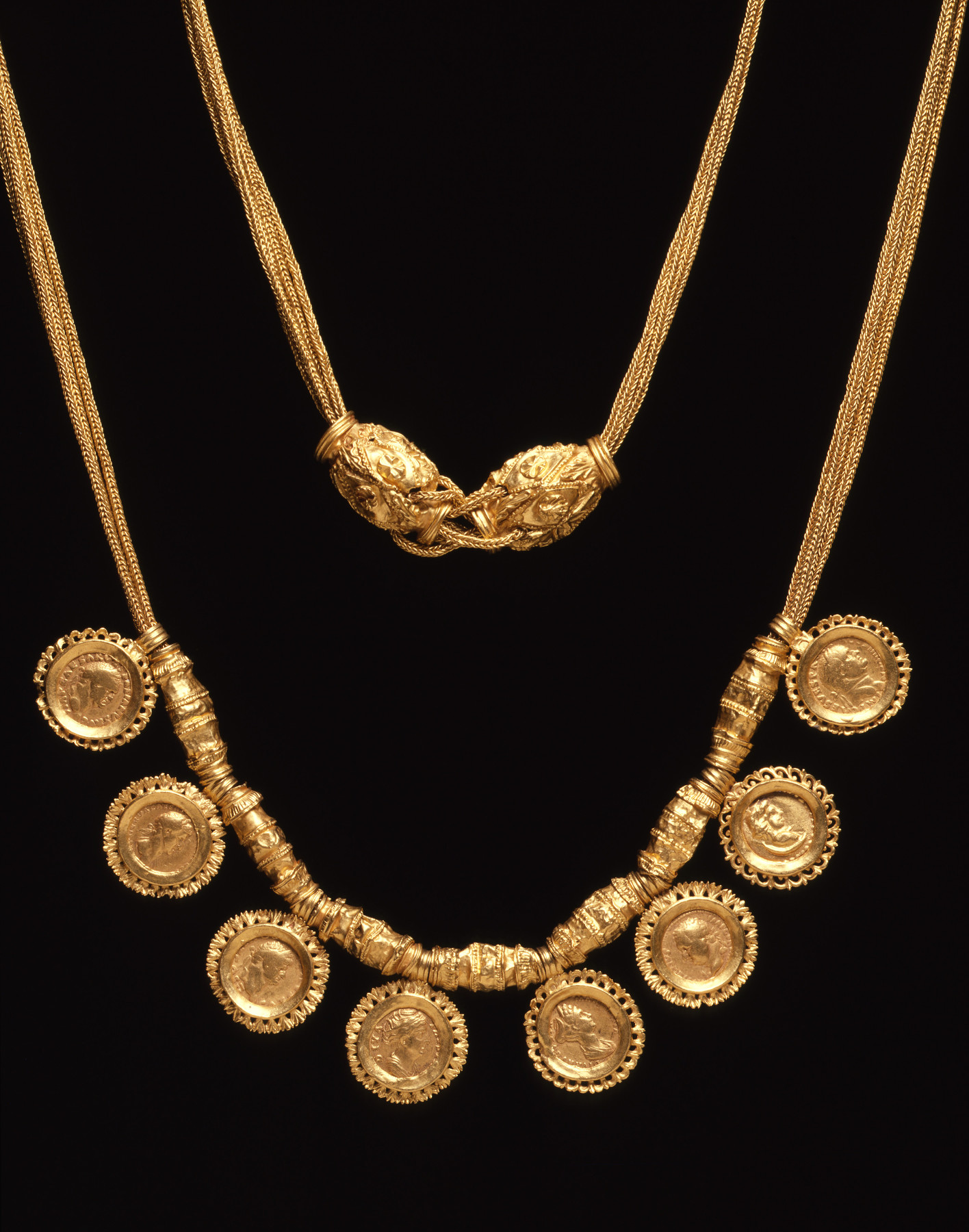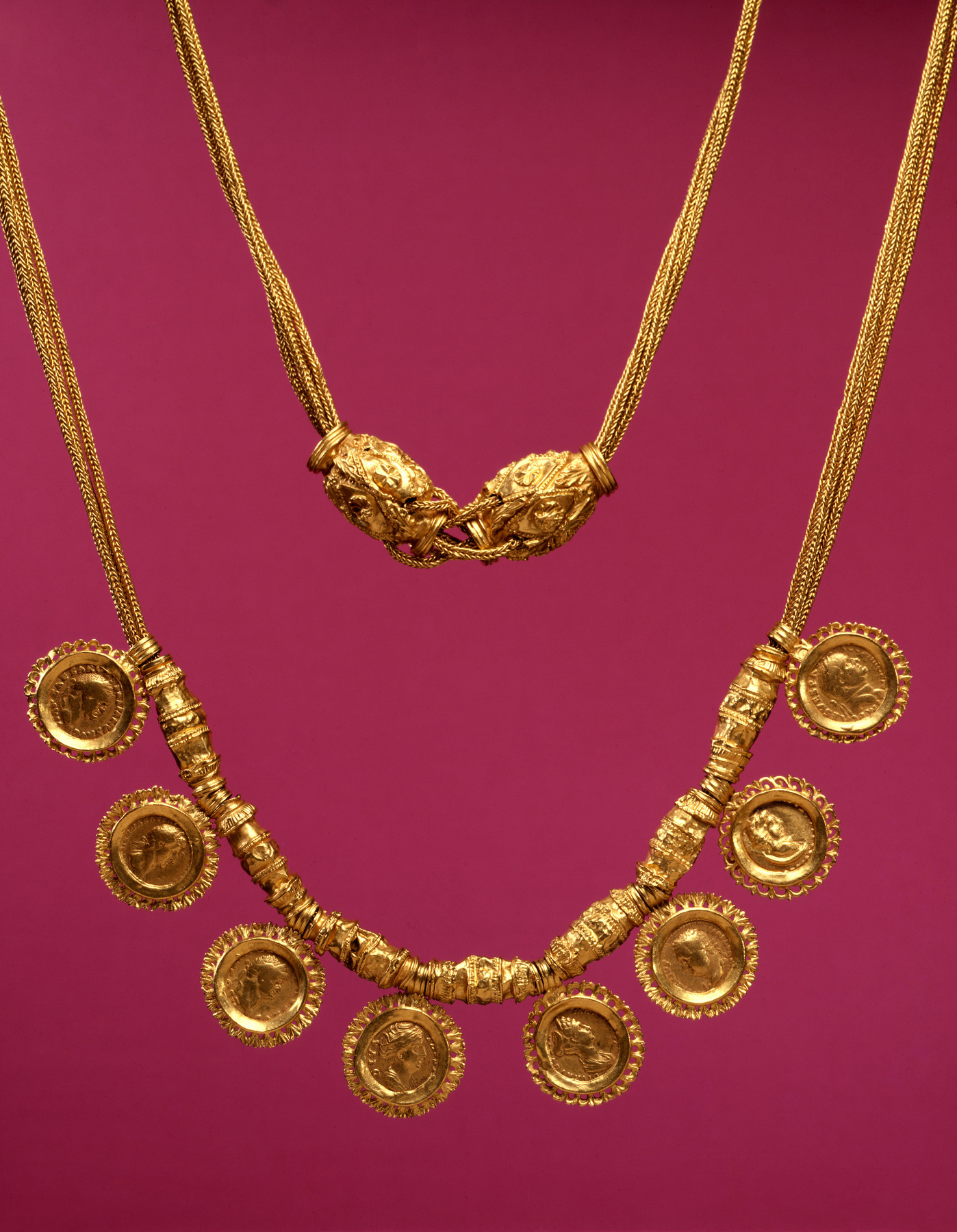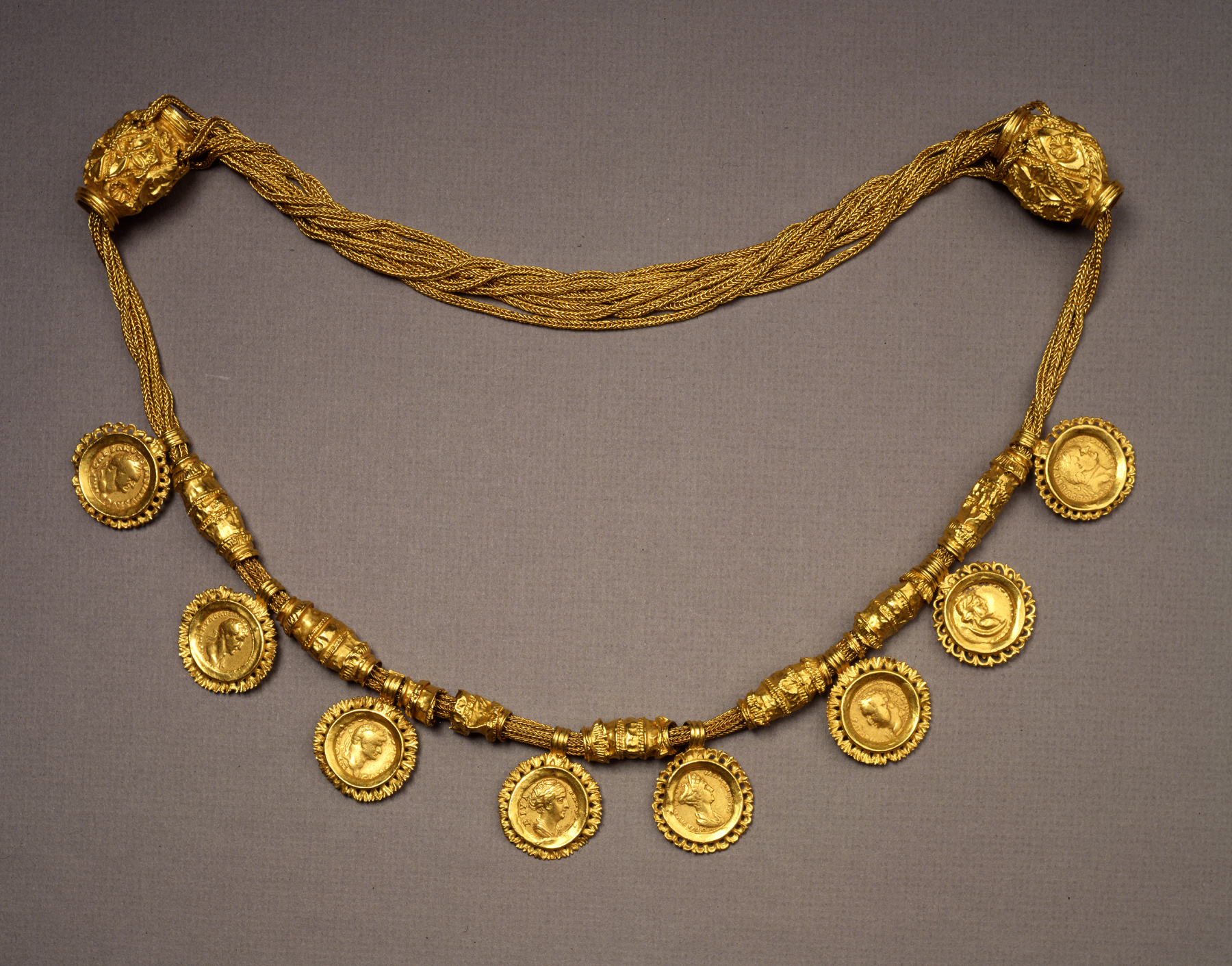Necklace with Pendant Coins
The gold necklace is composed of four braided chains. They are gathered together and, after passing through two large beads, cross over to the opposite bead where the ends are secured. The ends of the chains are fitted through holes crudely punched into the sides of the beads and are fastened by buttons inside. The overlapping chains give the impression that part of the necklace has eight chains. The length of the necklace can be adjusted by sliding the chains through the beads, thereby altering the amount of overlap. The beads are faceted and ornamented with rosettes, palmettes, and scallop shells. Collars keep the open ends from fraying.
Provenance
Provenance (from the French provenir, 'to come from/forth') is the chronology of the ownership, custody, or location of a historical object. Learn more about provenance at the Walters.
Adolph Schiller, Berlin, 1929 [mode of acquisition unknown]; Henry Walters, New York [date and mode of acquisition unknown]; Sadie Jones (Mrs. Henry Walters), New York, 1931, by inheritance; Mrs. Henry Walters Sale, Parke-Bernet Galleries, Inc., New York, May 2, 1941, lot 1313; Walters Art Museum, 1941, by purchase.
Exhibitions
| 1993-1994 | Coins and Costume in Late Antiquity. Dumbarton Oaks, Washington. |
| 1984-1987 | Objects of Adornment: Five Thousand Years of Jewelry from the Walters Art Gallery, Baltimore. Cooper-Hewitt National Design Museum, New York; Chrysler Museum of Art, Norfolk; Carnegie Museum of Art, Pittsburgh; San Antonio Museum of Art, San Antonio; Philbrook Museum of Art, Tulsa; Honolulu Academy of Arts, Honolulu; New Orleans Museum of Art, New Orleans; Milwaukee Art Museum, Milwaukee; Minneapolis Institute of Art, Minneapolis; Toledo Museum of Art, Toledo; The John and Mable Ringling Museum of Art, Sarasota. |
| 1987 | Jewelry from the Walters Art Gallery and the Zucker Family Collection. The Walters Art Gallery, Baltimore. |
| 1979-1980 | Jewelry - Ancient to Modern. The Walters Art Gallery, Baltimore. |
| 1947 | Early Christian and Byzantine Art. Baltimore Museum of Art, Baltimore. |
Conservation
| Date | Description | Narrative |
|---|---|---|
| 9/28/1979 | Examination | examined for exhibition |
| 4/11/1984 | Treatment | cleaned; other |
Geographies
Roman Empire (Place of Origin)
Measurements
H when doubled: 18 11/16 x D: 15/16 in. (47.5 x 2.4 cm); Diam of average medallion: 1 1/16 in. (2.75 cm)
Credit Line
Museum purchase [formerly part of the Walters Collection], 1941
Location in Museum
Accession Number
In libraries, galleries, museums, and archives, an accession number is a unique identifier assigned to each object in the collection.
In libraries, galleries, museums, and archives, an accession number is a unique identifier assigned to each object in the collection.
57.1600








